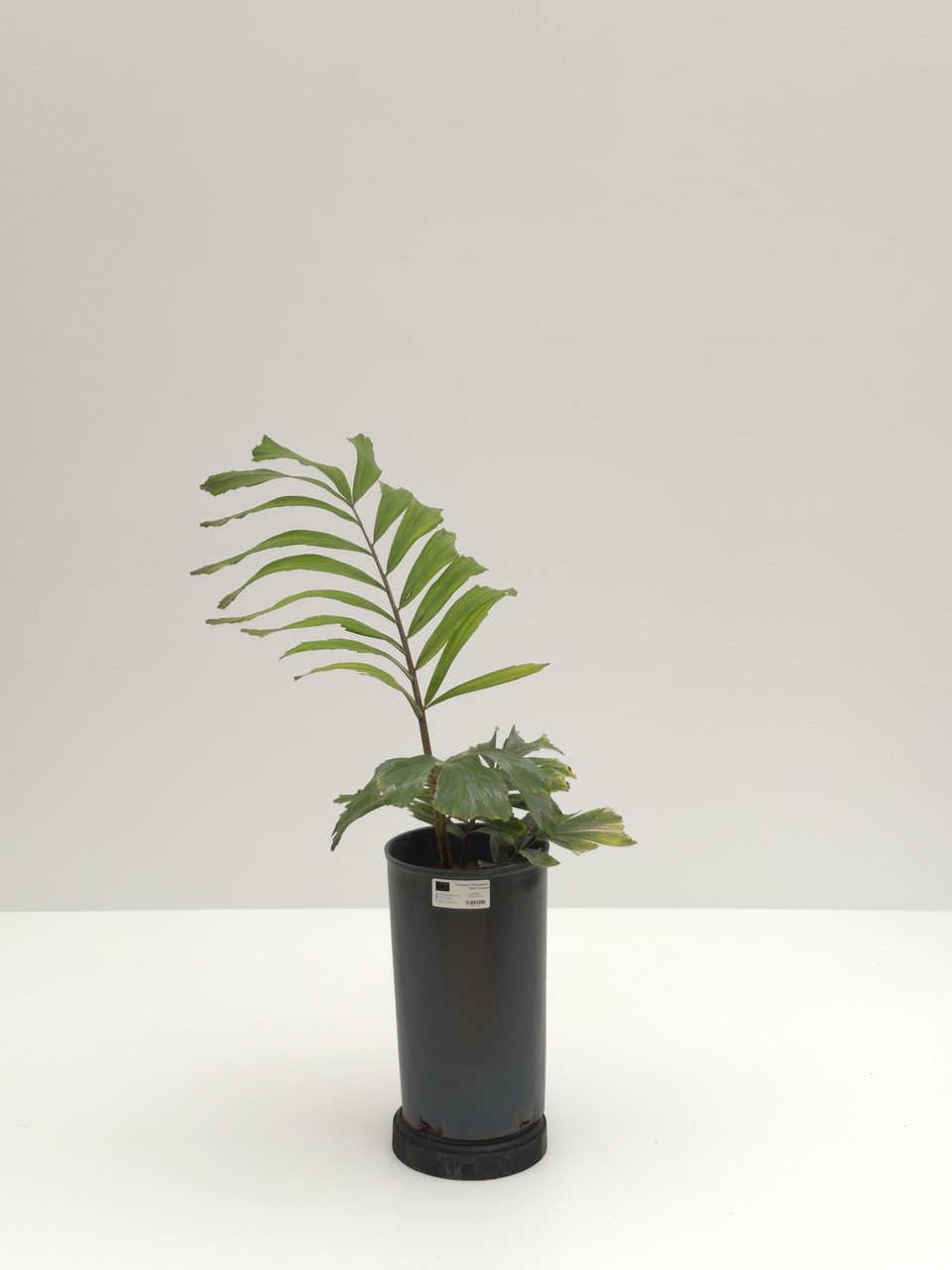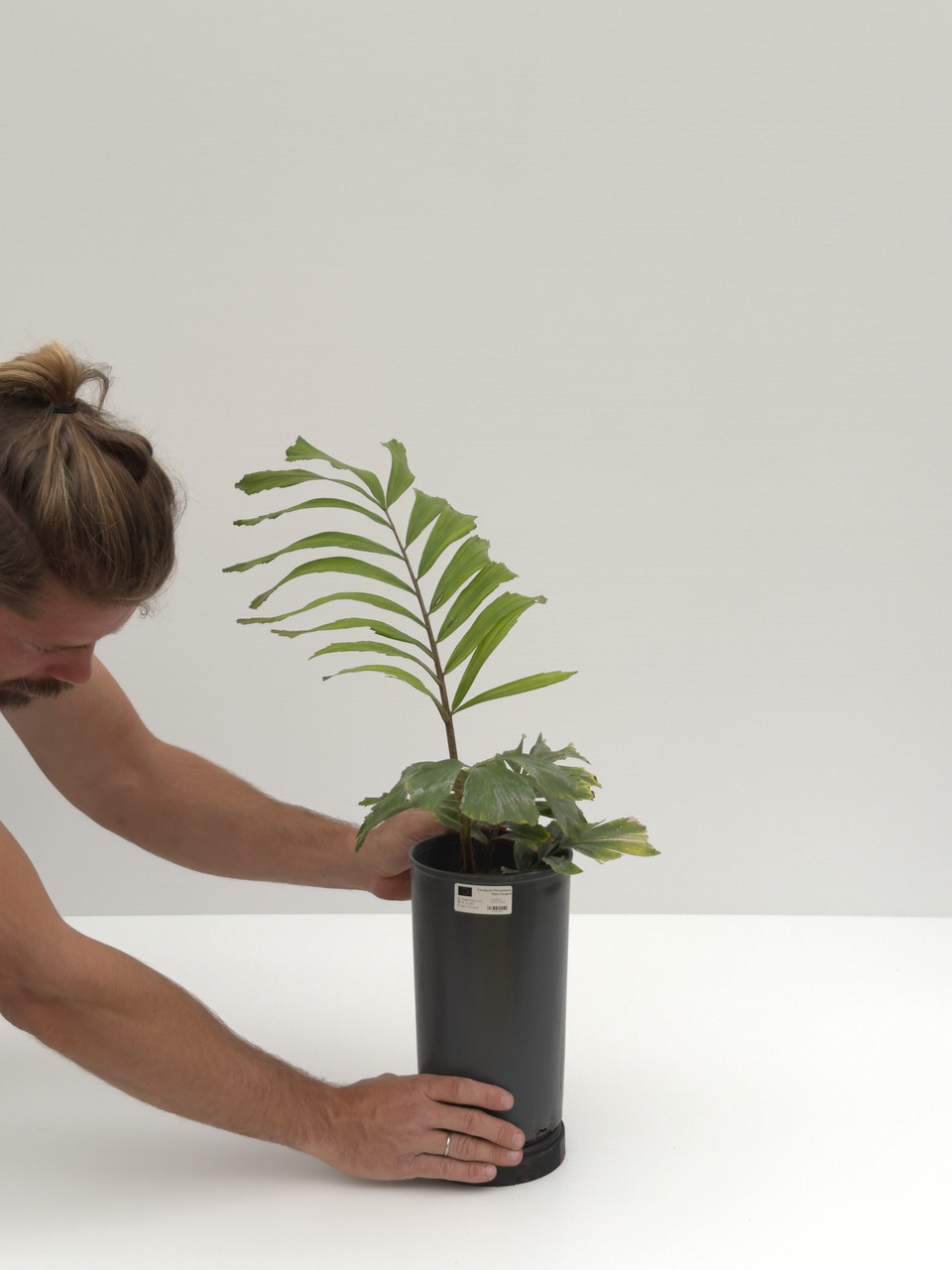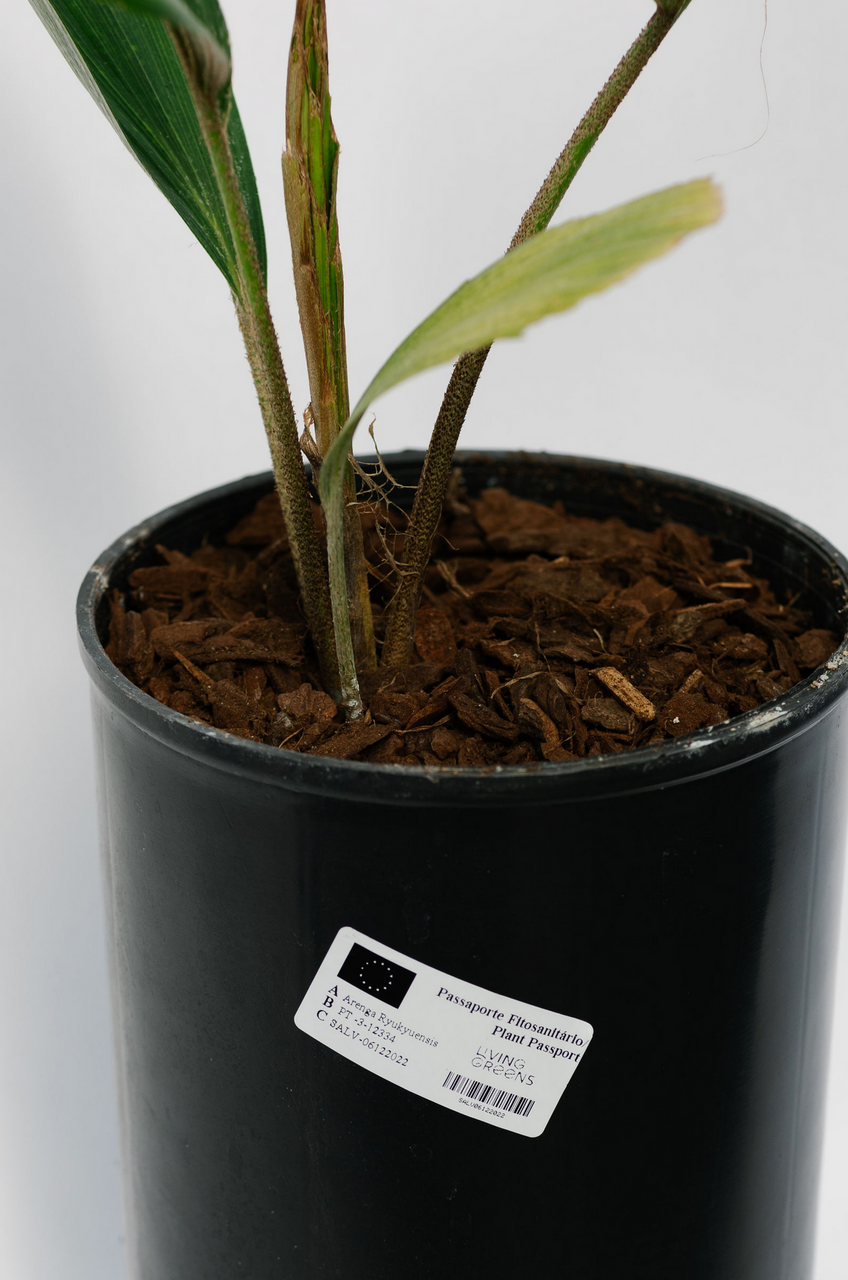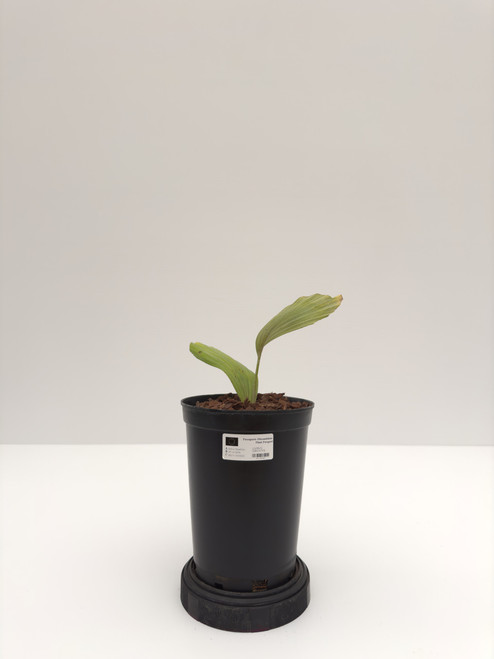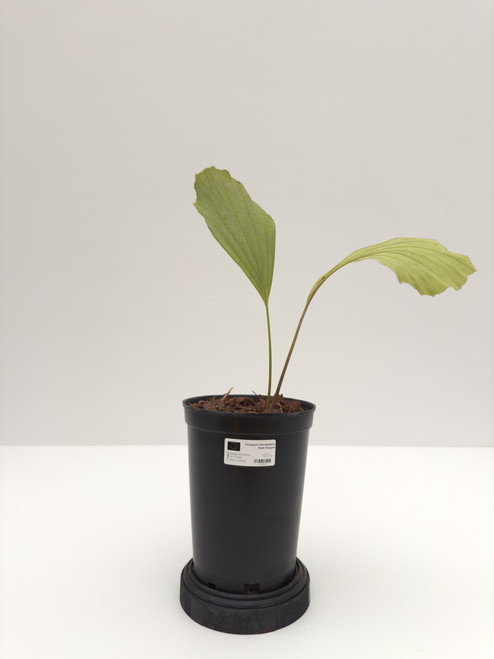Product Description
Habitat and Distribution
Arenga ryukyuensis is found in Japan, Ryukyu Islands. (Sakishima Group, Okinawa Group), Nansei-shoto, and the Bonin Islands. Lowland forest or secondary forest along river margins, or scrub forest especially near the sea shore, at low elevations. (Henderson, A.J. 2006)/Palmweb.
Description
Stems short and subterranean except for flowering stems, these reaching 2 m tall, 20 cm in diameter. Leaves pinnate; sheaths fibrous; ocrea net-like, sheathing, to 30 cm long; petioles to 1 m long, covered with felt-like, light brown tomentum and dark brown, peltate scales; rachis to 2 m long, tomentose as the petiole; pinnae 32-48 per side of rachis, linear, strongly ribbed adaxially, notched along the distal margins, without ears at the base, or rarely ears present, regularly arranged and spreading in the same plane except for the basal few pinnae, these paired; middle pinnae 43-59 cm long, 1.7-3.5 cm wide. Inflorescences interfoliar, unisexual, not seen in their entirety; staminate rachillae 26-37 cm long, 2.9-4.6 mm in diameter, numerous, glabrous; staminate flowers 8-9.5 mm long, spirally and distantly arranged; sepals 2.5-3.5 mm long; petals 7.5-9 mm long; filaments 0.5-1 mm long; anthers 5.5-6 mm long; stamens 35-59; pistillate inflorescences pendulous; rachillae 16-31 cm long, 3.4-6.8 mm in diameter, glabrous; pistillate flowers spirally and distantly arranged, 16-27 cm long, 5 mm in diameter, glabrous; pistillate flowers 2.5 mm long; sepals 2 mm long, broadly imbricate; petals 2.5 mm long, valvate for about two thirds their length; fruits globose, 1.2-1.8 cm in diameter, orange or red. (Henderson, A.J. 2006)/Palmweb.
This species has been illustrated by Walker (1976). Several specimens of Arenga ryukyuense are known from the Bonin Islands. On the label of two of these is written “grow wild from cult?”, indicating a cultivated origin for these specimens. The genus is not included in the palm flora of the Bonin Islands (Moore and Fosberg, 1956). (Henderson, A.J. 2006)/Palmweb. Editing by edric.
Culture
Cold Hardiness Zone: 9a
Comments and Curiosities
This palm is very similar to Arenga engleri from Taiwan, but differs in the pinnae being strongly ribbed adaxially, and the stems are only to about 2 m tall, whereas, Arenga engleri stems grow to over 4 m. tall. Arenga ryukyuensis seeds are also very globose, short and fat, whereas, Arenga engleri seeds are more elongate, also generally larger. Arenga engleri in Taiwan occurs at 200 – 1050 m. elevation, whereas, Arenga ryukyuensis is a lowland species, and occurs from sea-level up to about 300 m. Indeed, the more common localities to see A. ryukyuensis is on the coral limestone coastal rocks, often in the spray zone. The main difference between Arenga ryukyuensis and Arenga engleri is the infructescence. A. ryukyuensis fruits are somewhat exposed and visible from above, growing out of the top of the plant. Whereas, A. engleri fruits are often hidden in amongst the leaves, and almost never visible from above. Fruit of A. engleri ripens from green, through an orange/yellow to dark purplish red. A. ryukyuensis ripens from green through yellow to orange then dark red. (trebrown nurseries.com)

